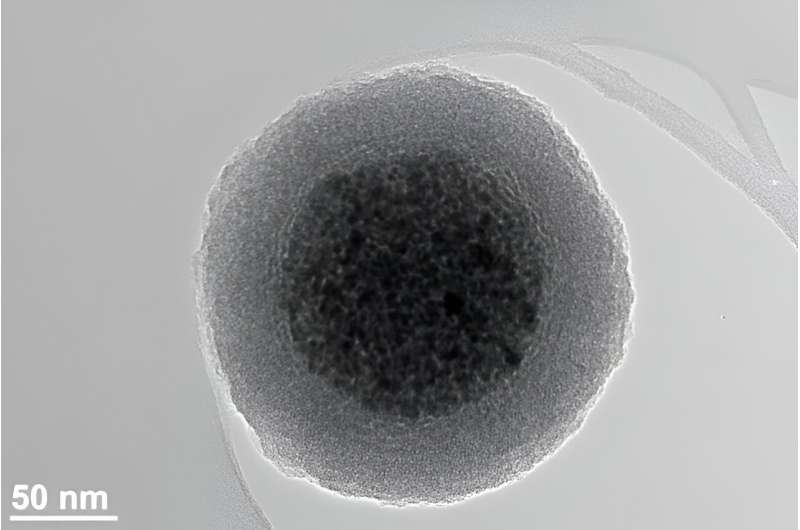This article has been reviewed according to Science X's editorial process and policies. Editors have highlighted the following attributes while ensuring the content's credibility:
fact-checked
trusted source
proofread
Precision coating boosts nanomedicine

A study published in the International Journal of Nanotechnology has looked at the controlled synthesis and coating of magnetic nanoparticles (MNPs), specifically using oleic acid (OA) and polyethylene glycol (PEG). These two well-studied polymers can be used in a co-precipitation approach to produce MNPs, which can be coated with different ratios of the two polymers to give different nanoparticle characteristics.
Magnetic nanoparticles can have many roles in medicine from targeted drug delivery and cellular tracking to serving as contrast agents in medical imaging, facilitating delivery of gene therapy agents, aiding in radiotherapy, and contributing to innovative hyperthermia treatments.
Nur Khalida Rahayu Zainon, Che Azurahanim Che Abdullah, and Mohd Basyaruddin Abdul Rahman of the Universiti Putra Malaysia in Selangor, Malaysia, used various characterization tools to study their coated nanoparticles. These techniques included X-ray diffraction (XRD), Fourier-transform infrared spectroscopy (FTIR), thermogravimetric analysis (TGA), and vibrating sample magnetometry (VSM). Each technique can be used to investigate chemical structures in different ways offering disparate and detailed information about the coated MNPs including structural, optical, and magnetic properties
The team has highlighted the optimal concentration ratios for coated MNPs and demonstrated how excessive levels of coating might impede the nanoparticle targeting capabilities. Conversely, insufficient coating can lead to unwanted aggregation of the nanoparticles. Magnetic saturation is reduced slightly in coated particles because the coating itself if non-magnetic, however, the coatings add several desirable properties, such as providing a protective and biocompatible shell around the magnetic nanoparticle as well as allowing functional biological agents and therapeutics to be attached to the nanoparticles in a way that is not easy to do with naked magnetic nanoparticles.
As the field advances, considerations such as the type of MNPs, nanoparticle shape, synthesis methods, particle size distribution, biocompatibility, and particle-particle interactions will emerge as critical factors in their development for biomedical applications. The present research enhances our understanding of MNP synthesis and coating and offers useful insights into their potential in nanomedicine.
More information: Nur Khalida Rahayu Zainon et al, Assessment of different organic coatings on magnetic nanoparticles for biomedical applications, International Journal of Nanotechnology (2024). DOI: 10.1504/IJNT.2023.135810
Provided by Inderscience




















